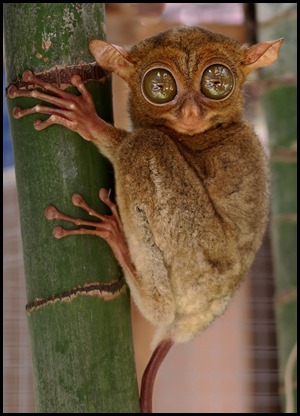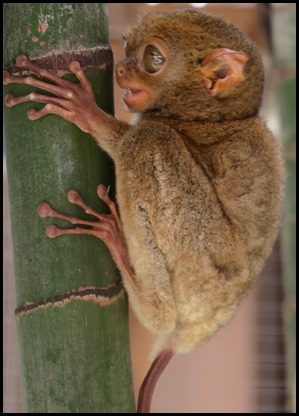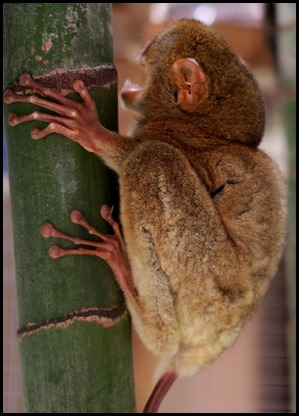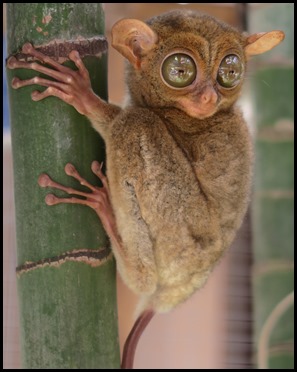Pygmy Tarsier

|
We Meet a Pygmy
Tarsier
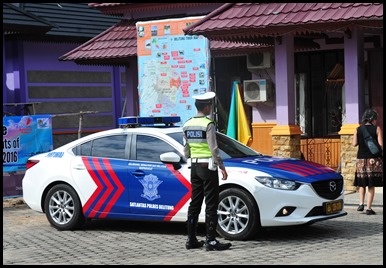 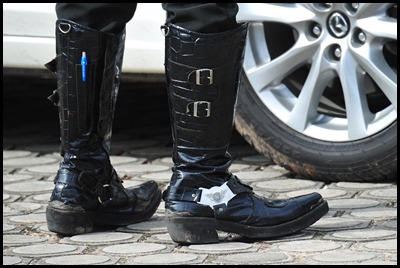 Our police
escort took us a short distance from Manggar Beach to a small cultural
museum. I still cannot get over the
boots.
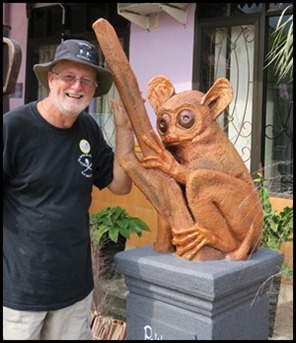 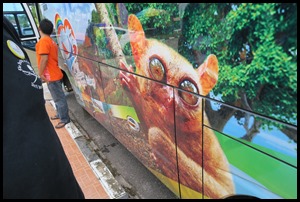 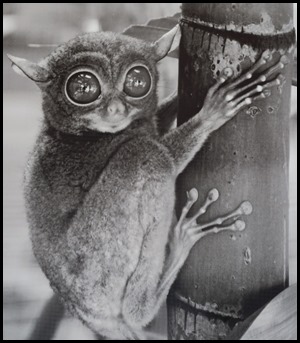 The tarsier statue, the picture on the side of the bus and
a picture on the way into the museum gave us no clues
to the size of what we were here to see.
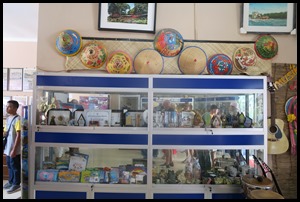  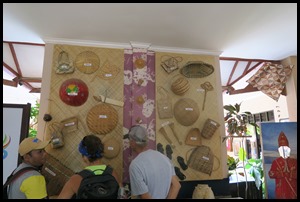 We made ourselves look at the first
room, full of local bits and bobs.
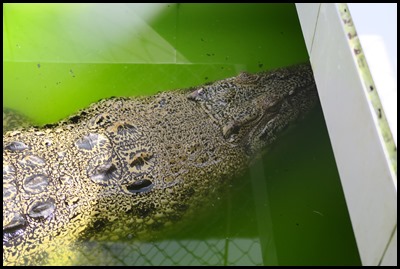  Out in the central courtyard was
a crocodile in what could best be described as a bath
with a net across the top. One of our ladies got hold of one of the museum
employees and gave him a roasting about the size of the poor creatures
accommodation.........Worse still was a filthy concrete pool at the end of the
crocodiles bath that was tiny and allegedly held some turtles. We did see
movement a couple of times as a head or two bobbed up for air but Oh
Dear.....
 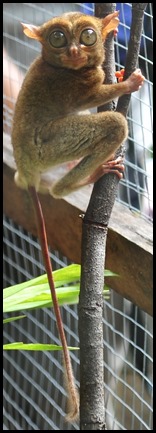 From the far end of the courtyard. The crocodile
pool is furthest away, a fountain in the middle held nothing and the poor
turtles are behind the ladies knees. The main attraction, in the aviary, was
sitting at elbow height and visible as a tiny blob.
Bear took the first picture of this tiny chap, all eyes, hands and tail. I was given a small grasshopper
and poked said wriggly between the bars. It took less than a second for the
tarsier to leap from his branch, grab the offered food, leap back to his branch
and swallow the shocked grasshopper. Talk about lightning
fast.
 We dragged ourselves to visit the back room laid
out to look like a traditional house. A stone game
followed by a jam session on a bamboo xylophone accompanied by
tambourines.
 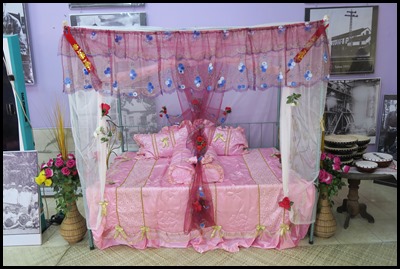 A bride and
groom graced the far wall and to the right a typical
bridal bed.
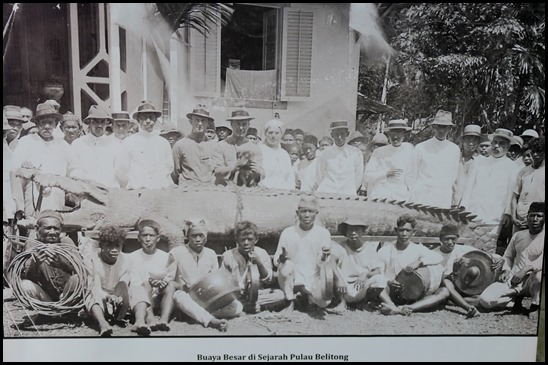 A picture of a
huge crocodile was hanging on the wall.
 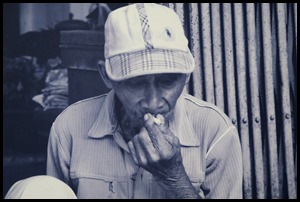 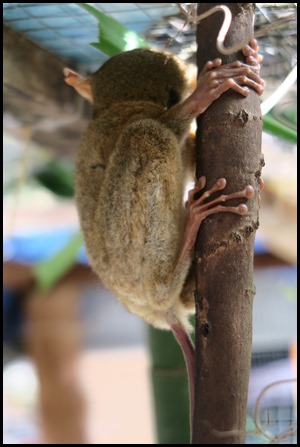 Our new mate Antu
Bubu stood in the corner, a great old
photograph..........that was it – back to the little
chap who set about to be very uncooperative. The challenge was set, to
get the pygmy tarsier in some decent shots.
 The pygmy
tarsier (Tarsius pumilus), also known as the mountain tarsier or the lesser spectral tarsier, is a
nocturnal primate found in central Sulawesi, Indonesia, in an area with lower vegetative species
diversity than the lowland tropical
forests. The pygmy tarsier was believed to have become extinct in the early
20th century. Then, in 2000, Indonesian scientists accidentally killed one while
trapping rats. The first pygmy tarsiers seen alive since the 1920’s were found
by a research team led by Dr Sharon Gursky and Ph.D. student Nanda Grow from
Texas A&M
University on Mount Rore
Katimbo in Lore Lindu National
Park in August 2008. The two males and single female (a fourth escaped)
were captured using nets, and were radio collared to track their
movements. As the first live pygmy tarsiers seen in 80-plus years, these
captures dispelled the belief among some primatologists that the species was extinct.

The pygmy tarsier has a head-body length of 95 to 105 mm (about 4 inches), and weighs less than 57 grams (2 ounces). It has very distinct morphological features, a body length which is smaller than other tarsier species, and a small body weight. It also has smaller ears than the rest of the genus, and its fur is tan or buff with predominant grey or brownish red colouring. The tail is heavily haired and ranges from 135 to 275 mm. The most noticeable feature of the pygmy tarsier are its large eyes, about 16 mm in diameter.
Sitting, getting ready to yawn and yawning turned this little chap into a real-life Gremlin.
We were fascinated with his hands, feet, speed and alertness.
Our favourites, pity about the cage reflected in his eyes.............
ALL IN ALL AN INCREDIBLE LITTLE CREATURE WHAT BIG EYES |
